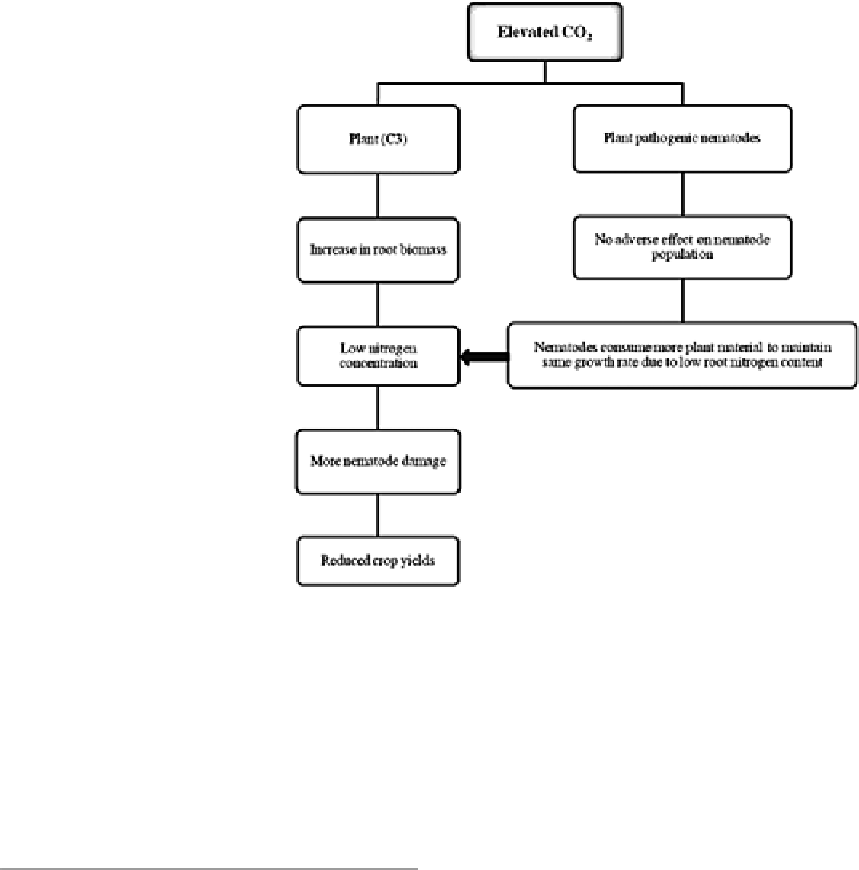Agriculture Reference
In-Depth Information
Fig. 9.1
Consequences of
elevated CO
2
levels on plant-
nematode interaction and crop
productivity (Somasekhar and
Prasad
2012
)
of rice root-knot nematode,
M. graminicola
(Fig.
9.1
) (Somasekhar and Prasad
2010
).
Critical assessment of available information
on responses of herbivorous nematodes to CO
2
enrichment reported from different ecosystems
indicates that the responses are either neutral or
positive but not negative so far (Table
9.2
).
• High temperatures are optimum conditions for
nematode activity.
• Stress caused by high temperature makes the
plants more vulnerable to nematode attack.
• Chemicals responsible for cell necrosis may
not be produced or may be neutralized or
counteracted at high temperature.
Temperature is the most important factor
infl uencing the biology of nematodes. Nematode
developmental rate is directly infl uenced by the
temperature with slower development at cooler
and faster growth rate at warmer soil tempera-
tures. In plants under environmental stress (at
high temperatures), nematode reproduction is
higher. Hatching and embryogenesis is faster,
and migration and penetration by the nematode is
favored by high temperatures. The nematode life
cycle is also completed faster at high temperature;
therefore, more generations are produced.
Moreover, at high temperatures, fewer males
develop. Therefore, increase in atmospheric tem-
perature due to global warming is expected to
result in more number of generations per season
and expansion of their geographical distribution
9.4
Elevated Temperatures
Temperature is the most important environmen-
tal factors that affect plant response to nema-
todes. It affects nematode survival, distribution,
embryogenesis and hatching, migration and
penetration, development, and symptom expres-
sion in the plants. Temperature requirements
vary among root-knot nematode populations
(thermotypes) and with each host-parasite com-
bination. Non-effi cient hosts of root-knot nema-
todes become progressively effi cient as
temperature rises. The fact that plants become
effi cient hosts at high temperatures is probably
due to three factors:

Search WWH ::

Custom Search